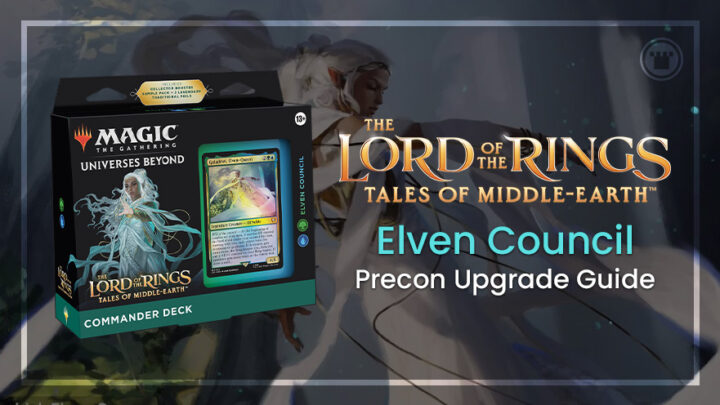Elven Council puts a strategic spin on politics and planning, and Jason is here to teach players how to embrace their inner, immortal wisdom in this Commander precon upgrade guide.
Commander players love politics (or they really hate it). Usually this meta-mechanic plays out through the form of deal-making or negotiations, but turning to the council codifies this process into Magic itself. And while we’ve had some frightening cards that ask players to vote, it’s nice to see the return of this playstyle with a thematic, elven dressing.
Whether you put Galadriel or any number of other elves at the head of this table, you should be in for a very interactive game of Commander. But is this the right deck for you, and how can you make it better? Let’s explore together.
Elven Council: New Cards
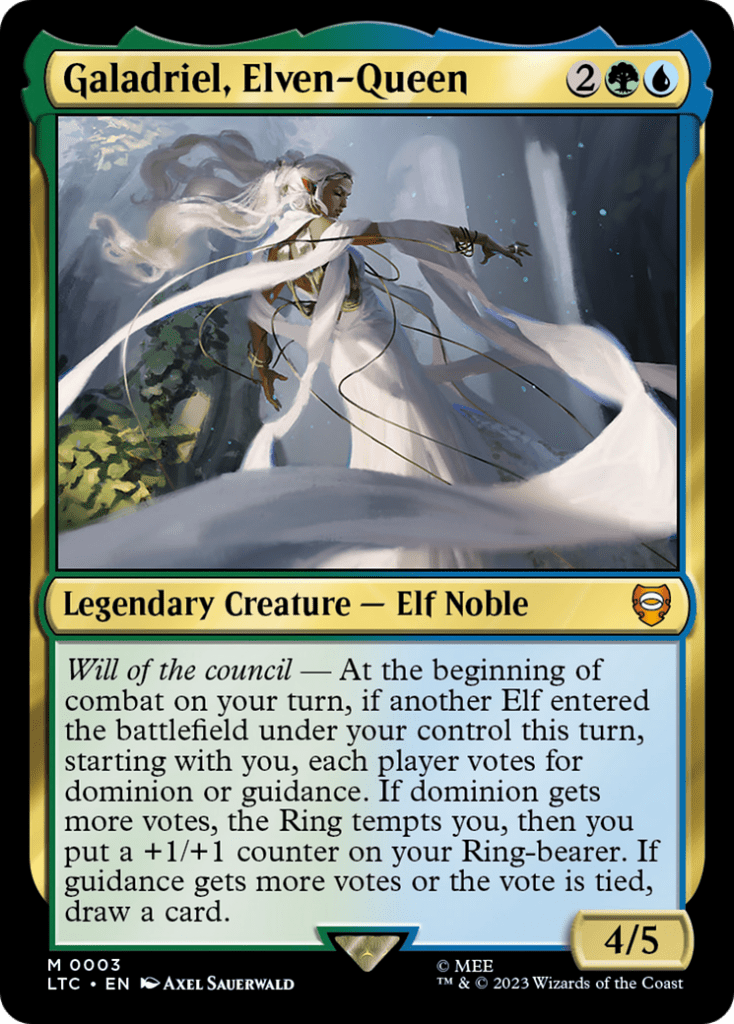
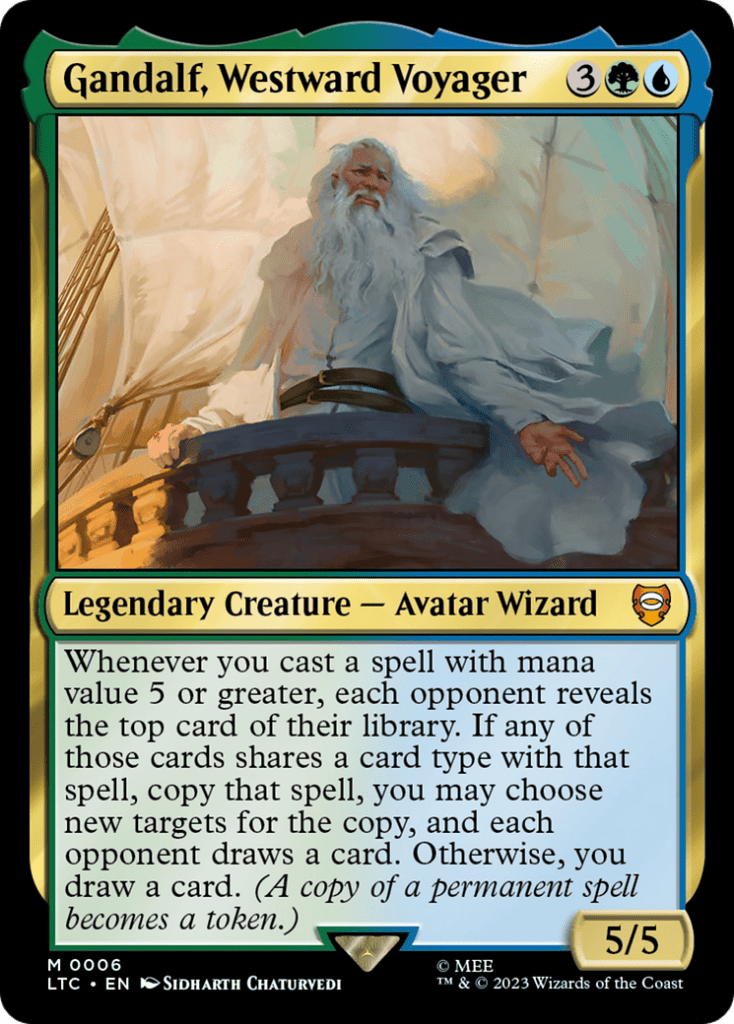
Galadriel cares about elves — literally, two ways. Not only does she want to protect them as the ruler of Lothlórien, but their consistent arrival is the method to trigger her ability. And when you do trigger her ability, the table votes to either let you draw a card or become tempted by the ring. The value here is nothing major, but it will add up over time. Plus, given the ring eventually lets you draw cards when attacking anyway, you sort of win no matter water.
Gandalf, meanwhile, is not an elf. He’s just a trusted friend and confidant to many of their powerful leaders. And fittingly (I guess?) his card goes in a completely unrelated direction. When playing with Gandalf, you won’t be voting at all. Instead, you’ll care about casting big spells and their similarity to what is on top of your opponents’ library.
Honestly, though, elves aren’t known for being very expensive to cast — which sort of makes Gandalf super out of place. This is a bit of a spoiler, but I actually think you just cut him from the deck entirely and double down on your elves instead. At least you won’t agonize over who will lead your deck!
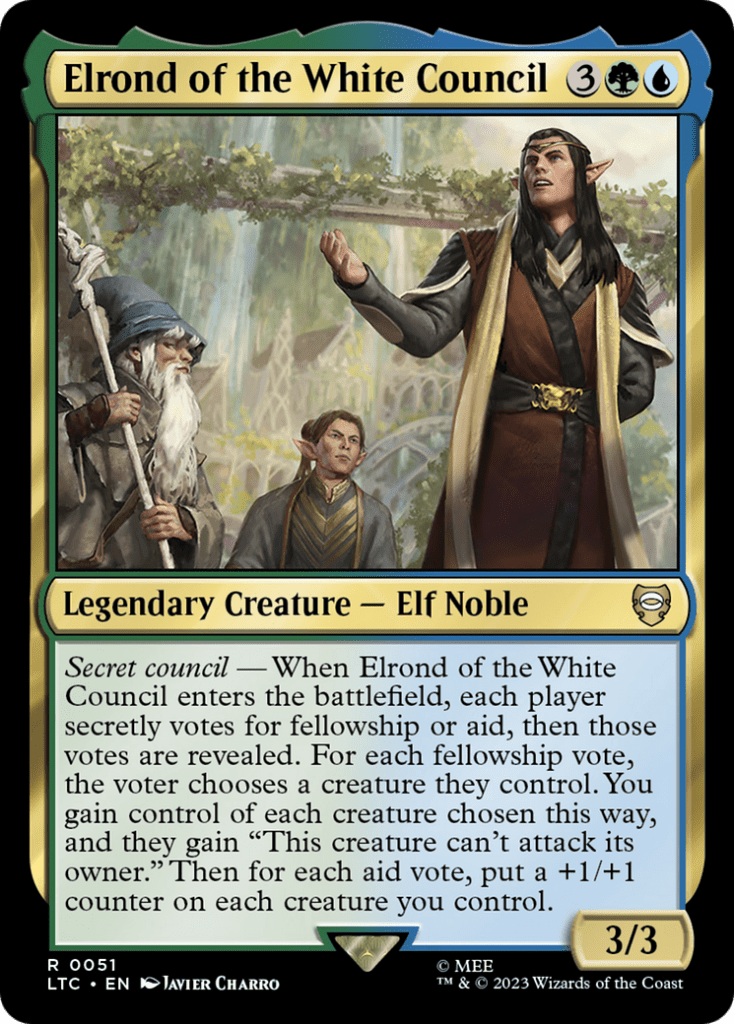
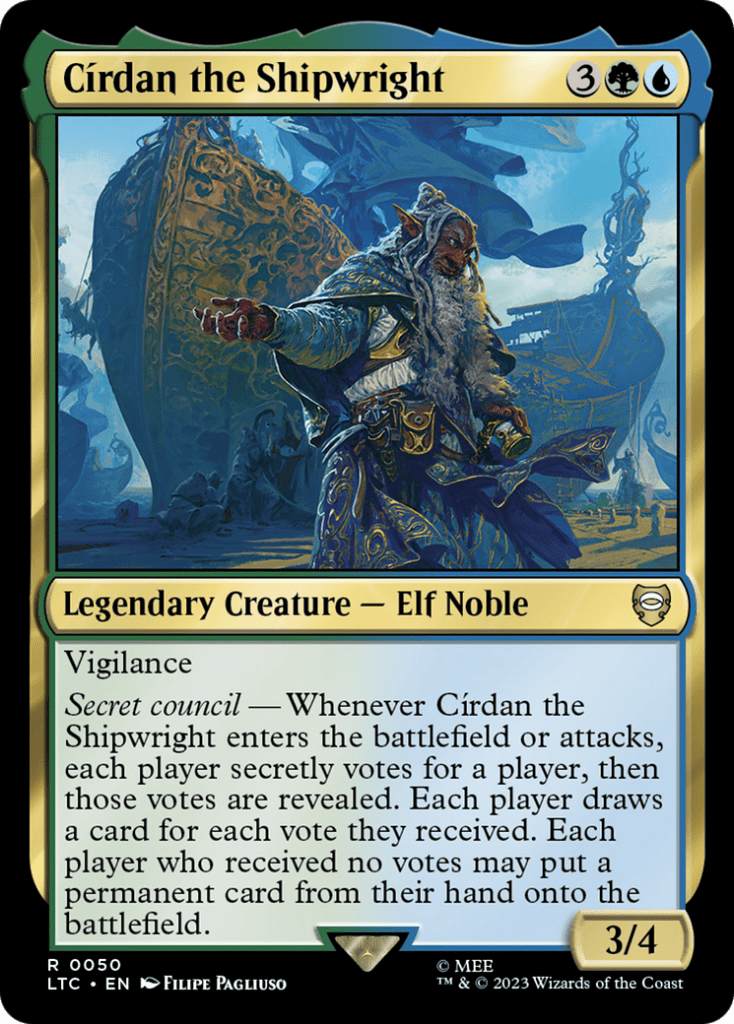

Next up is good ol’ Elrond, leader of Rivendell and fellow politician. When he arrives, you’ll either get to buff your entire squad or conscript some opposing creatures into your forces. Again, it’s a fairly win/win situation if you can position things right, but it is a bummer you will have to recur Elrond somehow to get multiple instances of his ability.
Fortunately, Círdan the Shipwright triggers voting on ETB AND on attack. The downside is he will probably also draw your opponents some cards. However, if they try to leave you out of the fun, you just get to drop whatever permanent you want onto the battlefield. I’m sure, either way, you can make it work to your advantage.
Meanwhile, Erestor cares about voting even if he doesn’t trigger a round of it himself. Instead, you get rewarded whether people voted with you or against you. There’s even a bit of treasure involved for those who went your way, making it slightly easier to nudge the table in the right direction.
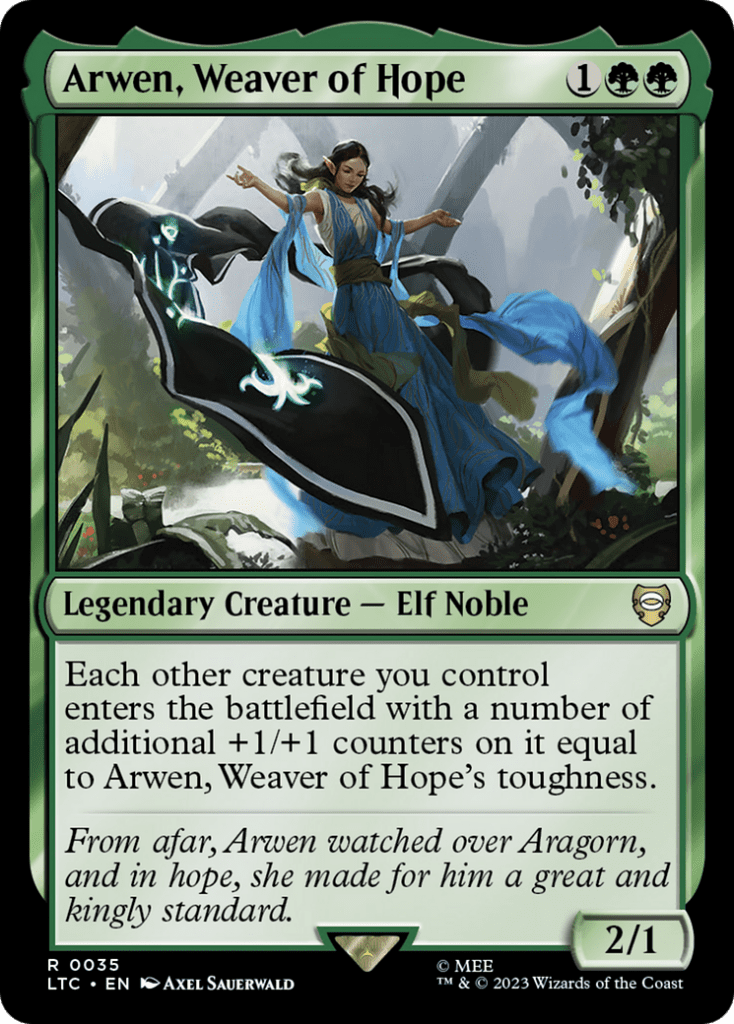


I call this trio “the ring-bearers,” because that’s what it seems like they’re designed to be. All of them get bigger and benefit the rest of your game plan in the process. And when Galadriel names them the ring bearer, they grow a bit bigger still!
Legolas somehow seems like the least exciting of them all, but all three will carry the responsibility well enough!
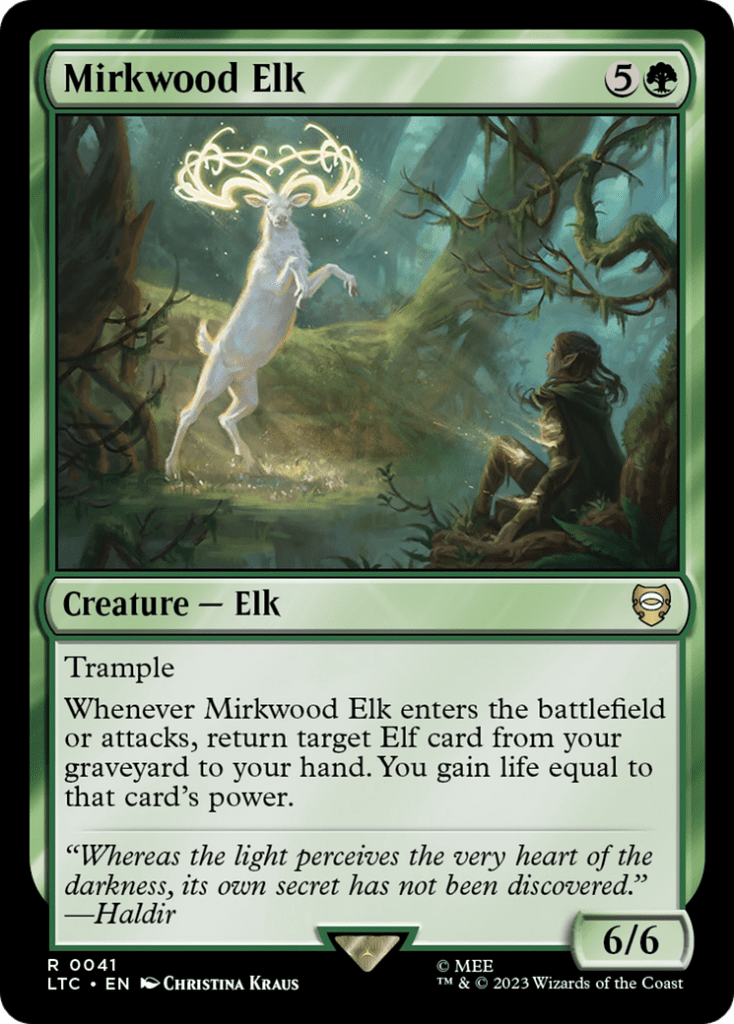
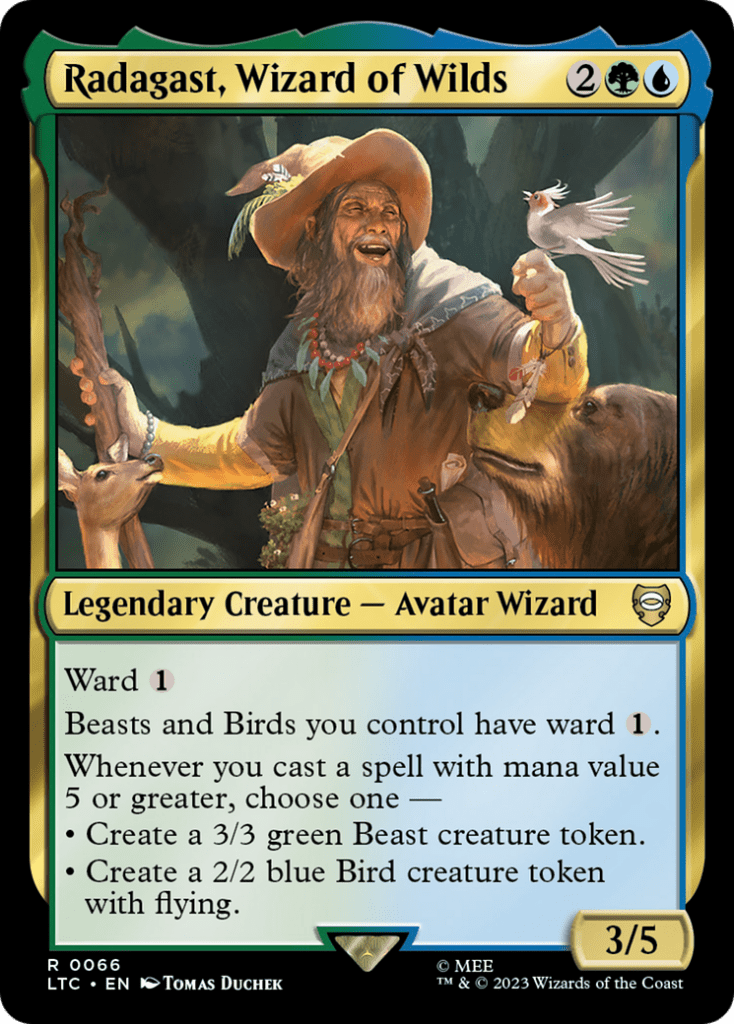
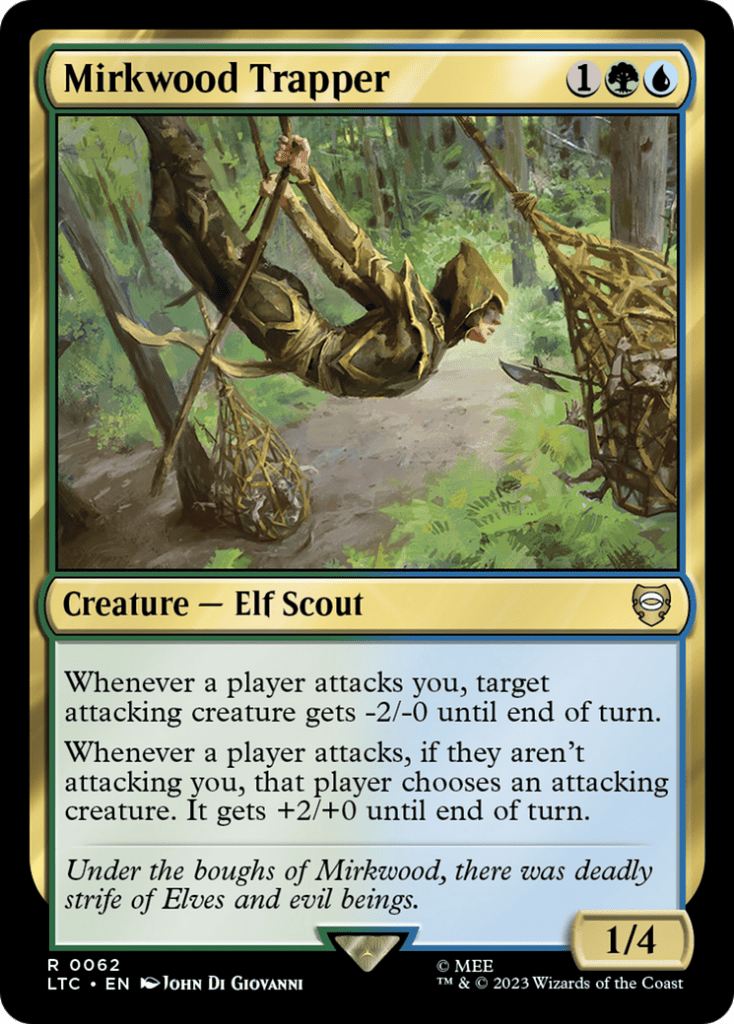
Then there’s this trio, which I affectionately call “what are you doing here?” They’re all cool cards in their own right, but probably in other decks. Mirkwood Elk is just beat out by better elves that regrow creatures from the yard, Radagast would really rather play with Tawnos and Mirkwood Trapper just doesn’t do enough to justify the deck space.
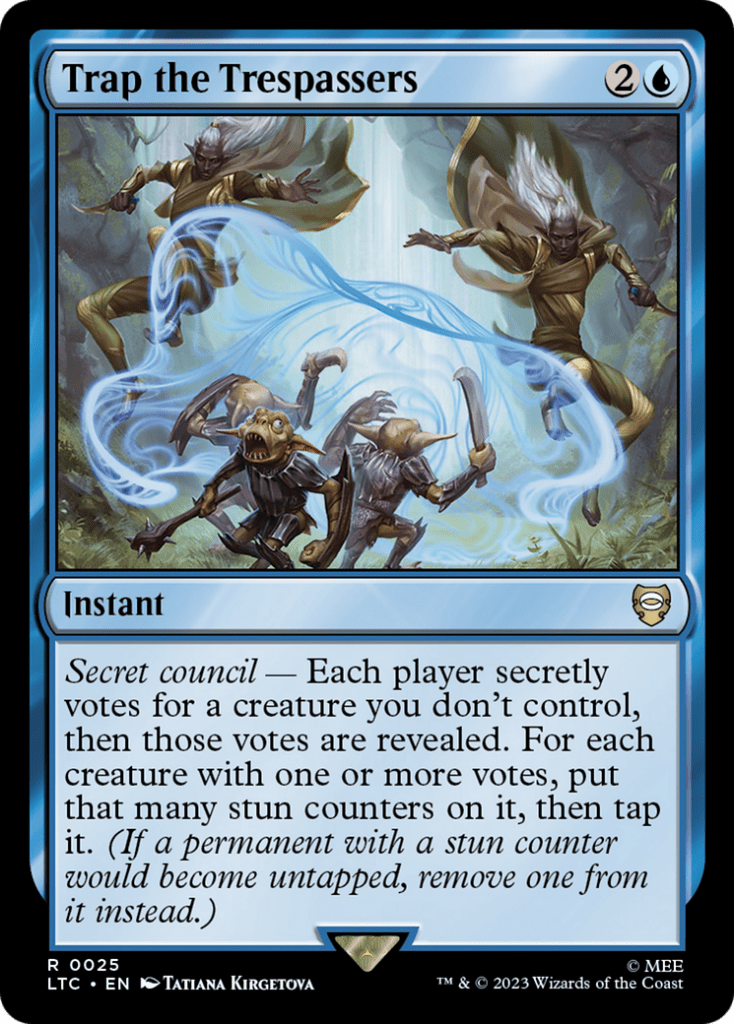

Creatures aren’t the only cards in this deck that ask players to vote. The first is just a cute little instant that can help lock down troublesome creatures, but Sail into the West has the potential to be a full wheel if the table actually wants it. Alternatively, you can use it to get a couple of cards back from the yard, which is rarely a bad thing.
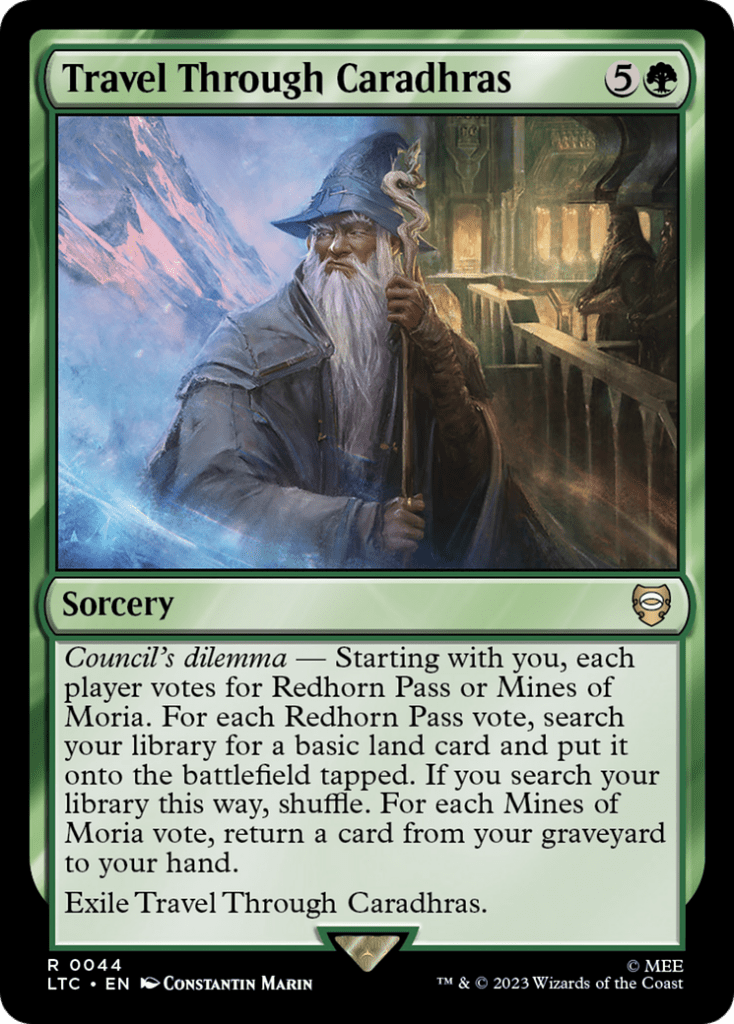
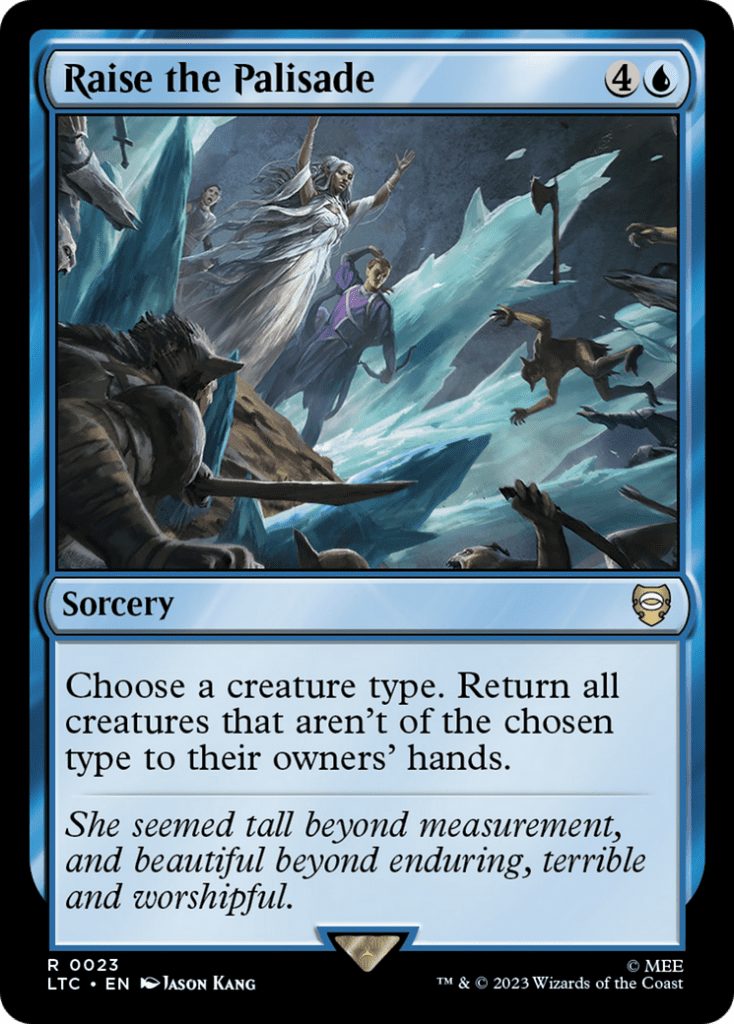
Travel Through Caradhras continues the voting trend, but it is a tad on the expensive side. You could theoretically ramp quite a bit with it, but that’s ultimately in the hands of the table. Raise the Palisade at least gets you a bit more guaranteed value since you can bounce everything that isn’t an elf off the table.


Next there are a pair of spells that spit out a grip of elf tokens, which is always handy. Ambush is a fog (which is a kind of card on the rise) and Slice is a bite spell with upside. Given Simic doesn’t have a whole lot of direct removal, this is appreciated.
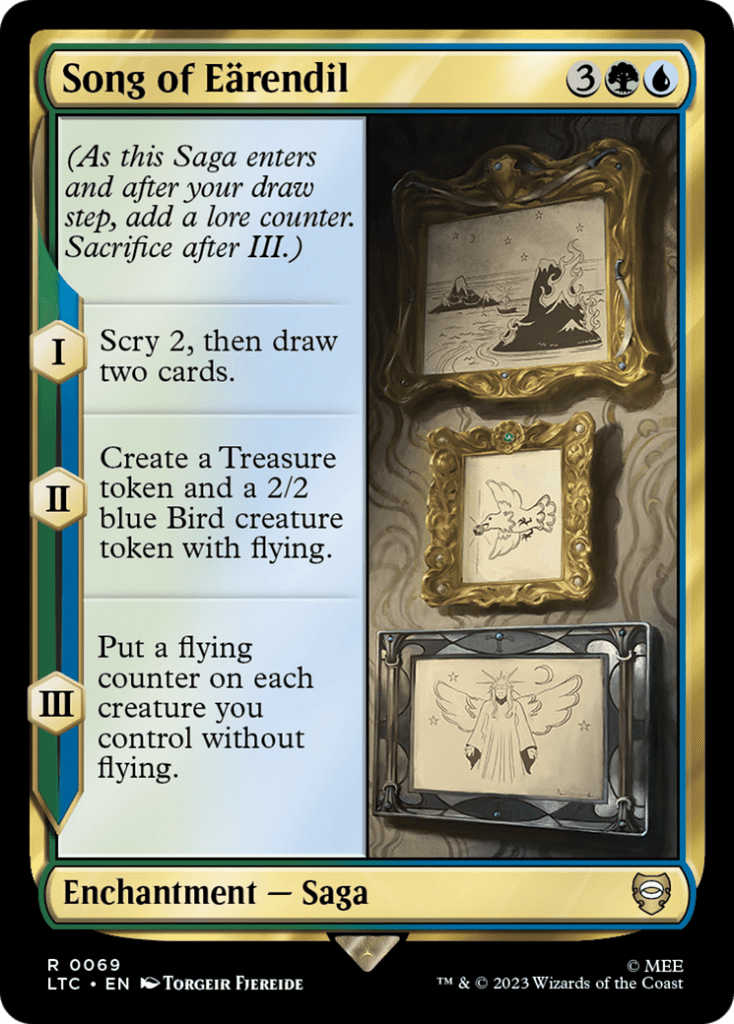
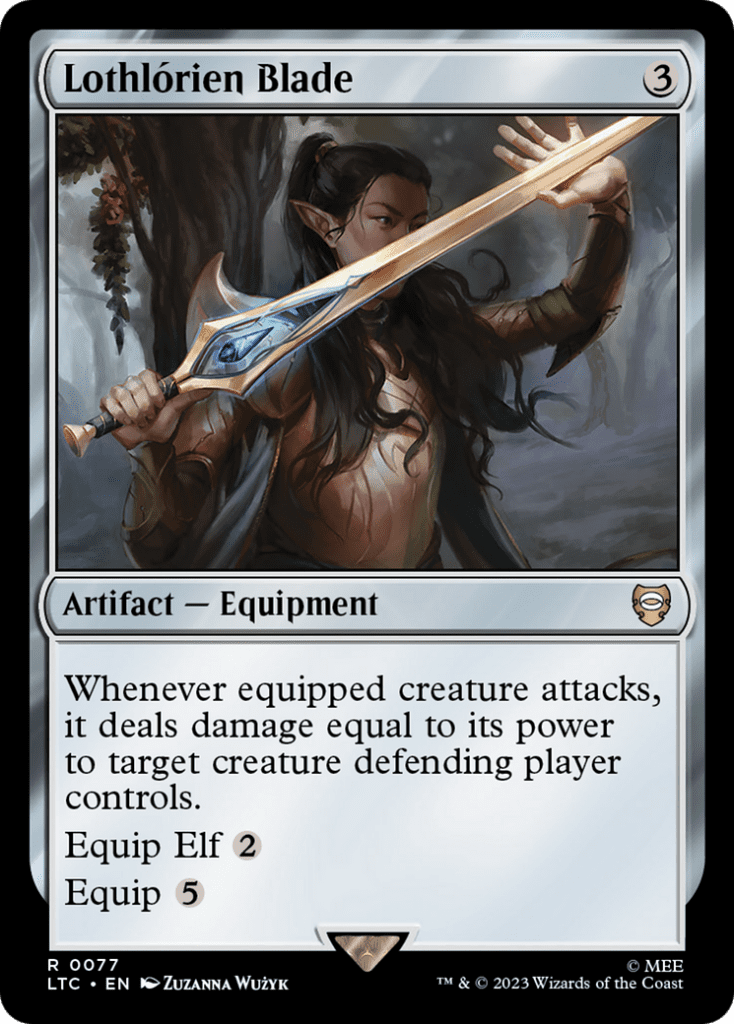
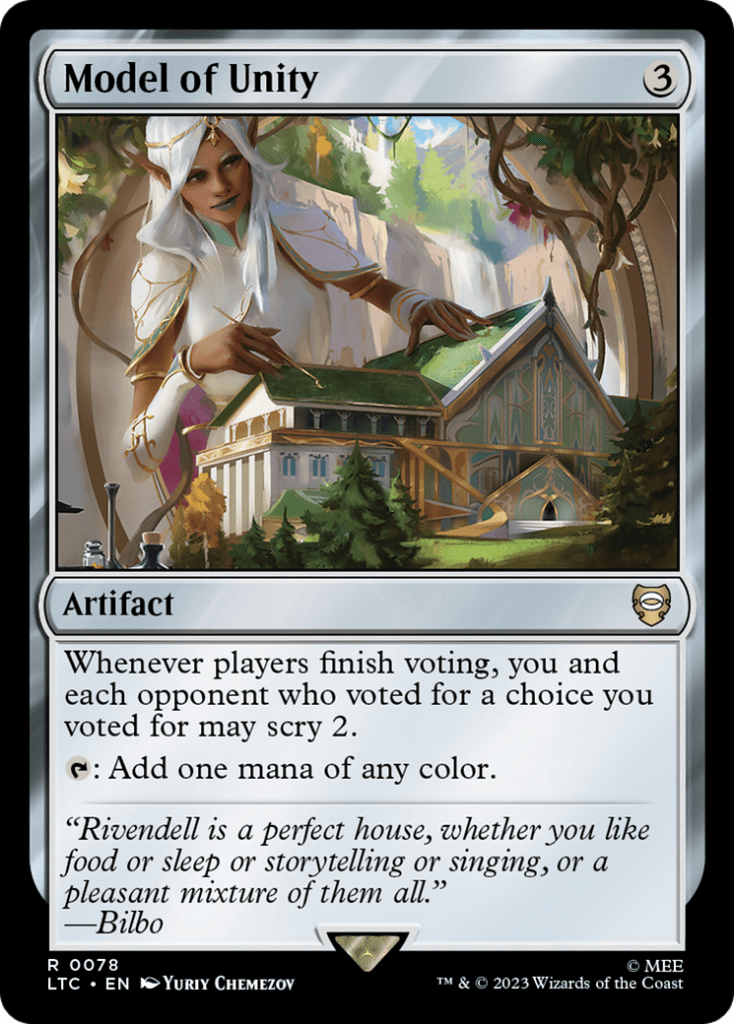
Finally, in terms of new cards, we have a smattering of noncreature permanents! The first is… actually pretty easy to skip since it hardly interacts with the deck’s theme! The saga’s final chapter is sort of nice because elves don’t usually fly, but the rest doesn’t spark much joy.
Lothlórien Blade isn’t necessarily thematic either, but it is at least useful. At least Model of Unity saves the day by caring about voting — even if it’s just some additional scrying. Honestly, I’m just glad to see another playable, three-mana mana-rock.
Elven Council: Deck Review
Now that we know all of the new cards, let’s take a look at the deck as a whole. First, there are a few reprints worth mentioning that boost the power. Genesis Wave is always great, especially in an archetype that can usually generate a vast amount of mana. Then there are a couple pieces of interaction (and anti-interaction?) between Swan Song, Heroic Intervention and Asceticism.
That said, the deck as a whole has a lot of potential. Building it points you in a clear direction, too, which is always important for a preconstructed product. Unfortunately, the overall lack of voting cards in Magic forces the inclusion of some random pieces that either hit on the elven sub-theme or just don’t belong at all.
Out of the box, this feels like a relatively weak precon — especially compared to some of the heavy hitters that have come out lately. However, with a bit of love in the form of a budget upgrade, you can hone in on a more focused list.
Elven Council Budget Upgrade
Good news, elf fans who like their money. Upgrading this deck barely costs more than $40, which is less than half what we usually set for a budget. That means, if you have the extra cash, you can splurge on a better mana base, which is helpful but not always as fun. Heck, if you really want people to hate you, slot Expropriate in there and go to town.
For everyone else, the bulk of these upgrades are all creature related since you’re playing a deck that really cares about a particular creature type.

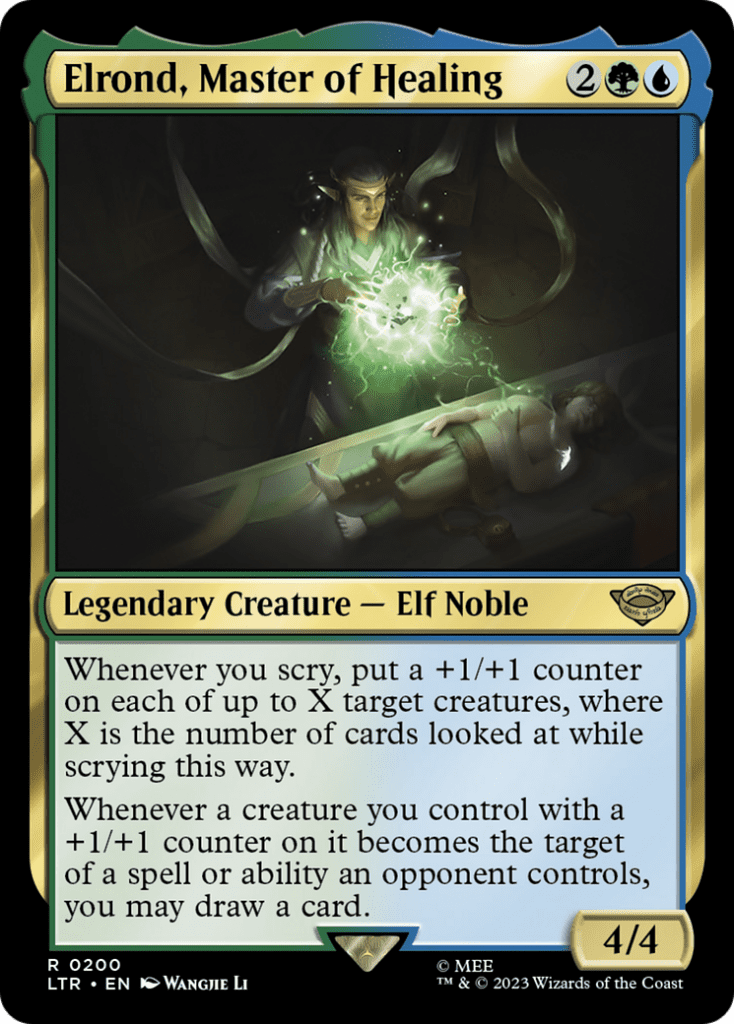
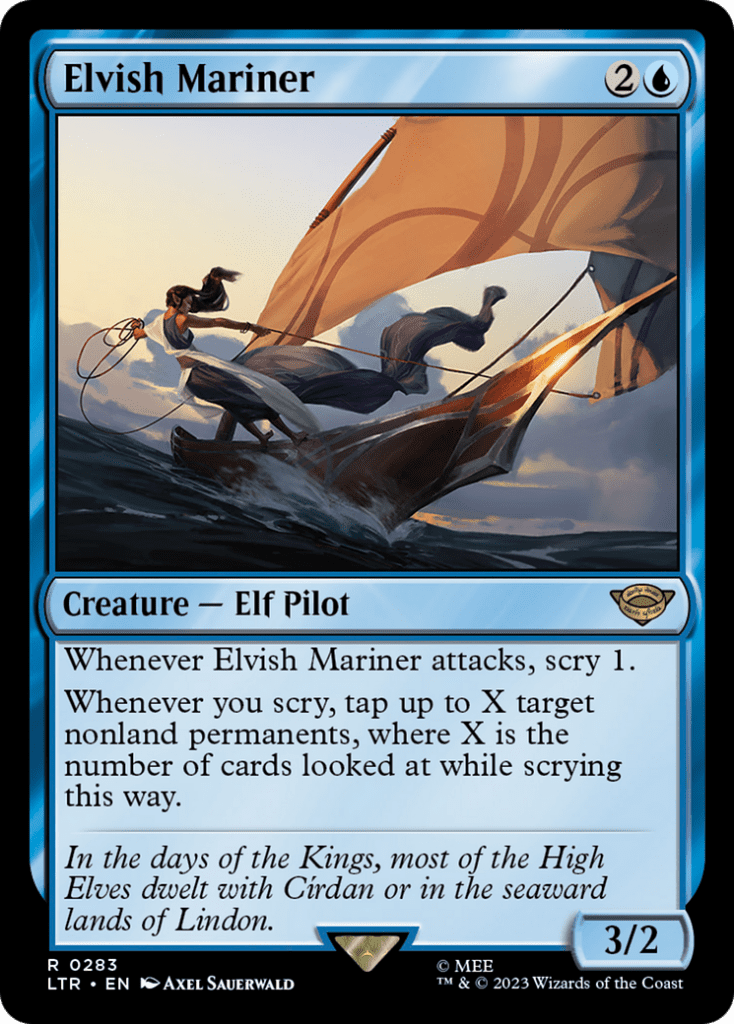
The first set of cards are all from the main Tales of Middle-earth set, keeping you perfectly on theme. As it turns out, there are alternate versions of both Galadriel and Elrond that play nicely alongside their Commander counterparts.
The former will come in handy whenever the ring tempts you, all while ramping at the same time. Elrond can also help your creatures get bigger, thus making them harder to block and more likely to connect. You’ll also notice that both cards, and elves in LTR as a whole, happen to care a lot about scrying. Well, that’s why we have Elvish Mariner, which will tap down all the blockers you need as you scry toward the right card every turn.
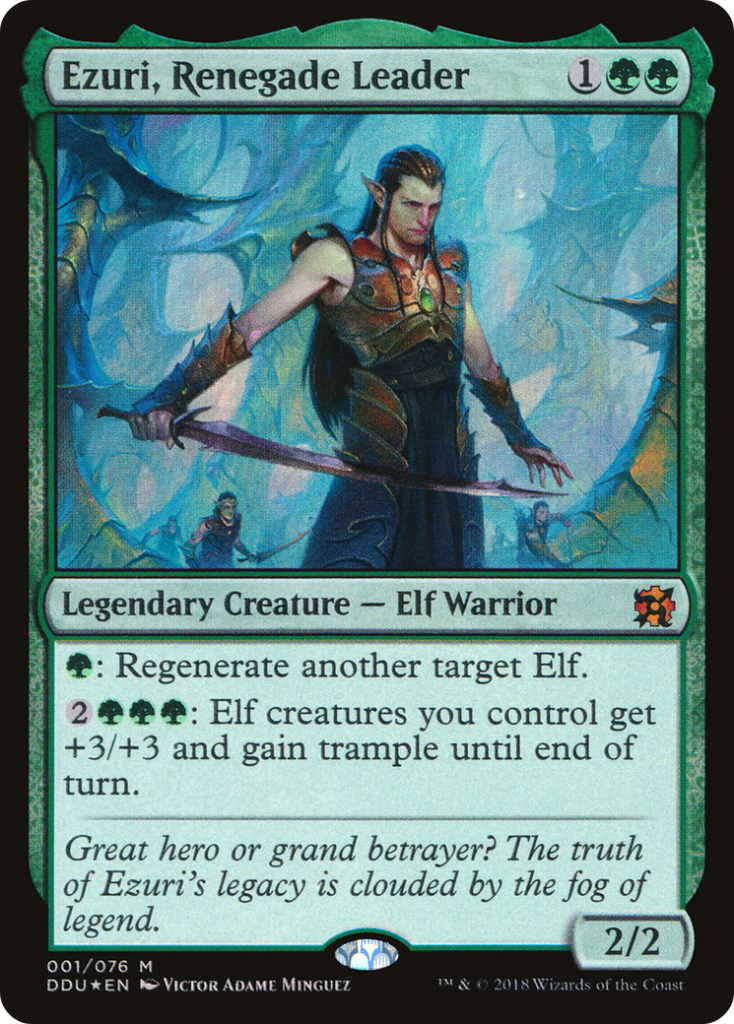
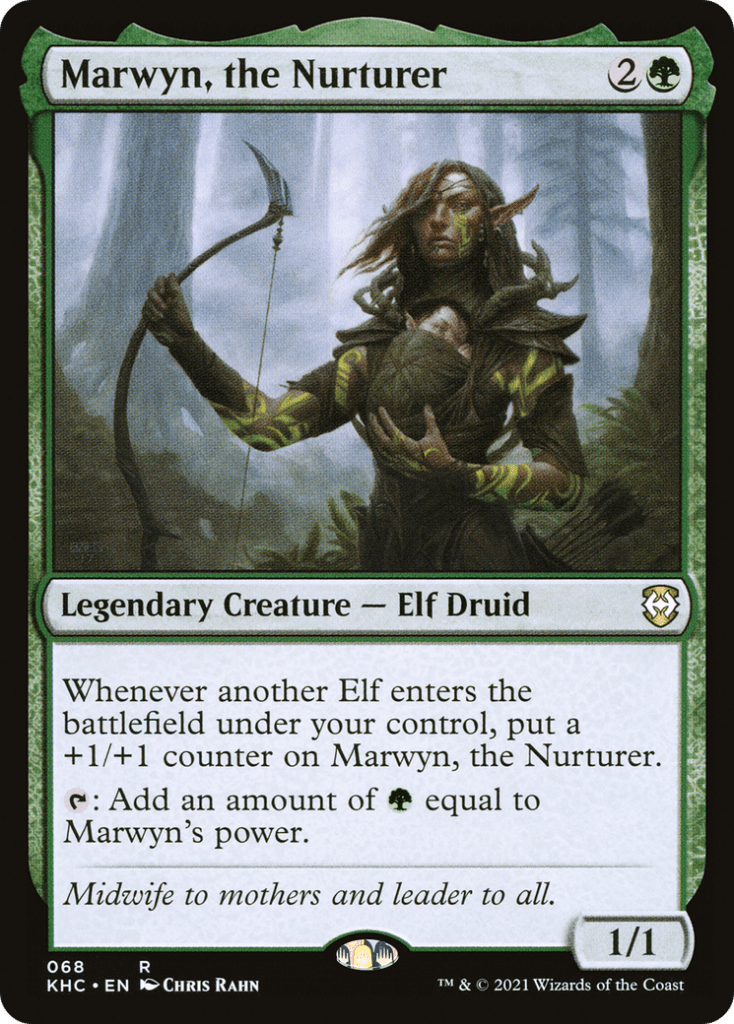

Next we have a set of cards that A) make your board big and B) give you additional upside. Ezuri’s ability to regenerate your key pieces is crucial, and his overrun effect (repeatable, I might add) will absolutely close out games.
Marwyn, meanwhile, is a bog-standard card when elves matter, but that’s because she gets huge and makes obscene amounts of mana. Finally, Imperious Perfect may have a more modest impact, but that consistency in churning out 1/1s (that then get pumped) will be important if you ever run low on cards in your hand.
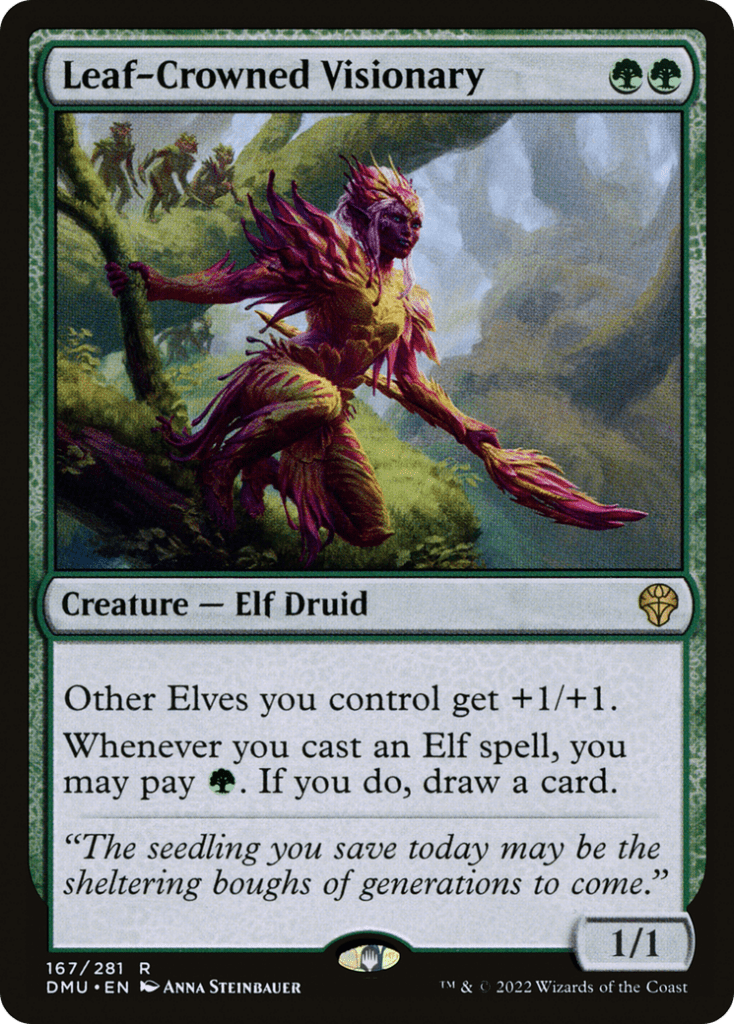

Here we have a pair of cards that will help you draw cards on two fronts — both when you cast creatures and when you attack with them. The extra power from Visionary is also never unappreciated.

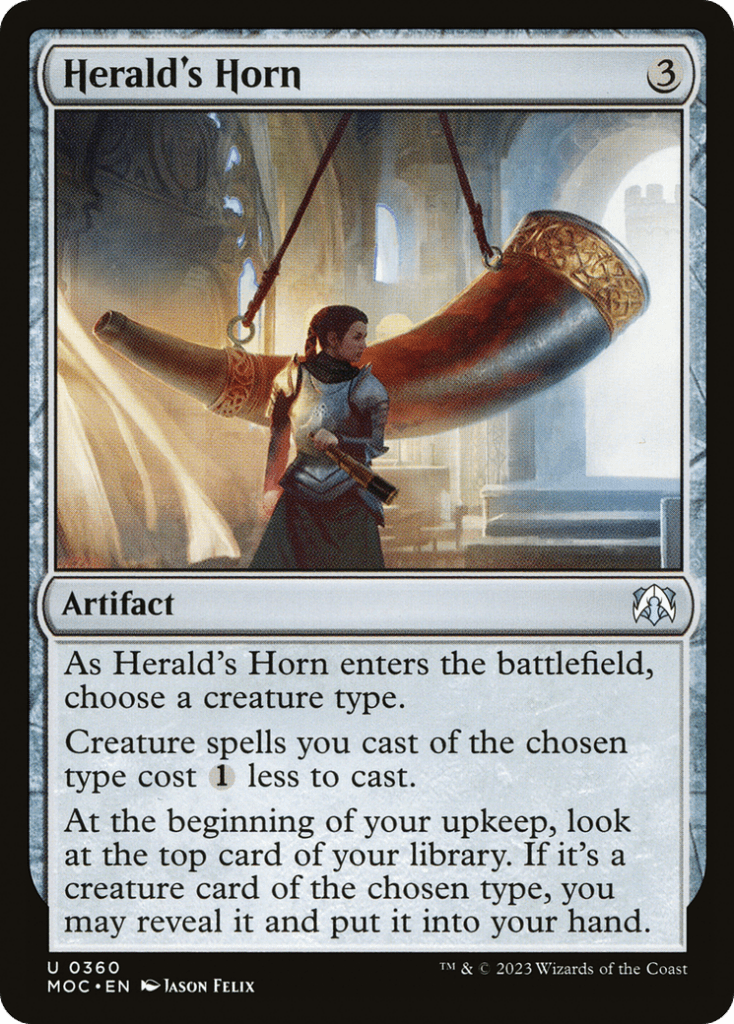
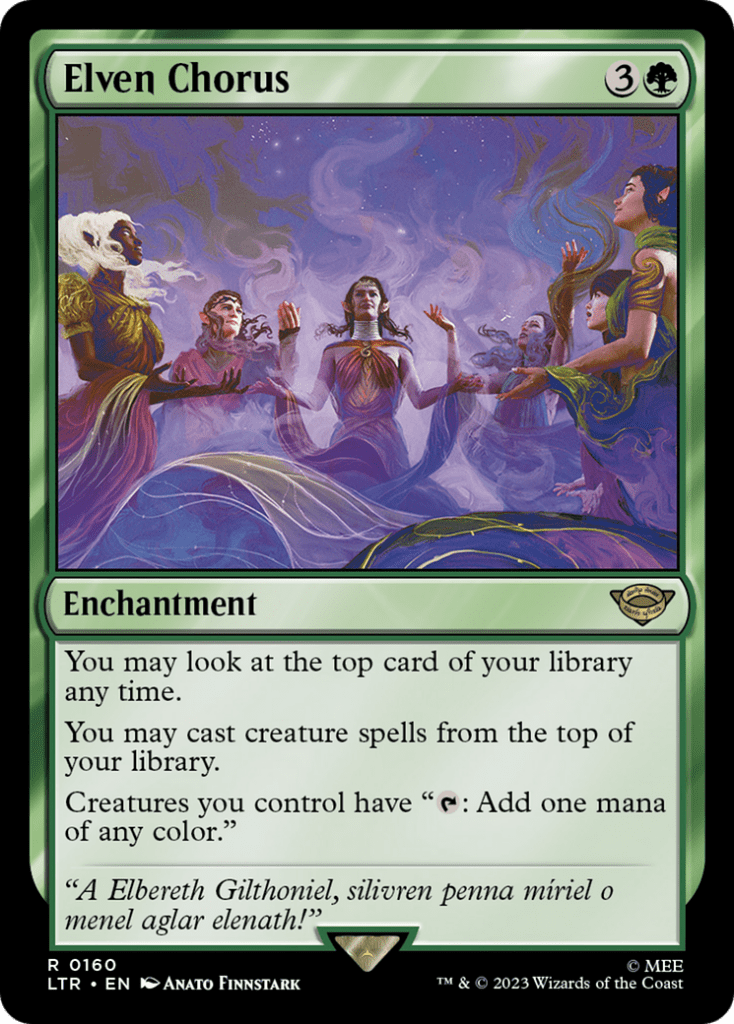
Finally, here are three more cards that get you a bit more value out of your deck. Herald’s Horn and Elven Chorus both let you dig through the top of your deck and, one way or another, make it easier to cast creatures. Then, Tribute of the World Tree can draw you cards in some cases, but it mostly makes your creatures all a bit bigger and more threatening.
As for what we cut, it’s basically anything that doesn’t care about elves or voting — plus a few low-value or clunky spells that won’t be missed:
- Gandalf, Westward Voyager
- Mirkwood Elk
- Mirkwood Trapper
- Radagast, Wizard of Wilds
- Colossal Whale
- Hornet Queen
- Wose Pathfinder
- Seeds of Renewal
- Lorien Revealed
- Elven Farsight
- Song of Earendil
Honestly, there is probably room for a bit more cutting and perhaps some additional interaction (Pongify/Rapid Hybridization might be nice to have on hand), but these changes put the deck in a pretty good spot.
End Step
Meeting adjourned! You now should have all the knowledge you need to start politicking like an inscrutable elf. Go forth, participate in democracy and be sure to check out our other Commander precon upgrade guides elsewhere on the blog!

Jason Krell is the content manager at Card Kingdom, meaning he helps make all of this possible. He is also an unabashed Esper control player, and he hopes the two things at least cancel each other out. He loves when everyone gets to do their thing in a game of Commander and spends way too much thinking about game design. Jason also comes from an esports journalism background, which probably explains a lot about his work.

